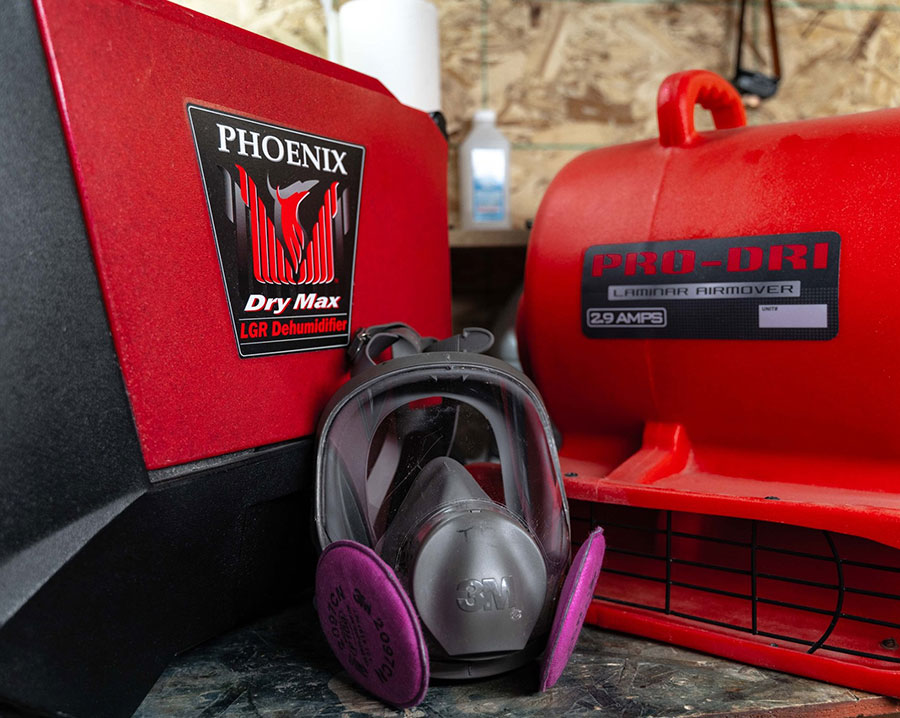Ever thought about that small spill you ignored? It might seem harmless, but it could lead to a bigger problem. Mold growing under your carpet is a common issue many homeowners don’t catch until it’s too late. A damp carpet might seem like a simple annoyance, but it could be hiding a hidden danger.
Key Takeaways
- Mold thrives in moist environments, making wet carpet a potential breeding ground.
- Carpet dampness can occur without visible wetness, especially in humid and poorly ventilated homes.
- Preventing carpet mold involves rapid spill response, maintaining low humidity, and proper home ventilation.
- Opting for mold-resistant carpet materials can reduce the risk of mold development.
- Regular professional cleaning and inspection are vital to mitigating mold growth under carpet.
What Causes Mold to Grow Under Wet Carpet?
Mold grows under a wet carpet when moisture and poor air flow meet. This can happen from spills, leaks, floods, or condensation under the carpet padding. These issues lead to too much moisture, making it perfect for mold spores to grow.
Mold spores are always in the air and can land in wet spots. A humid setting makes mold spread faster, especially after carpet gets wet. Mold can start growing under the carpet in just 24 to 48 hours after getting wet.
Stopping leaks is key to avoiding mold. Fixing leaks quickly helps keep the area dry. Taking quick action is crucial to stop mold from growing under carpets. This shows why being proactive and keeping an eye on things is important.
Signs Your Carpet May Have Mold
A musty smell in your carpet is a key sign of mold. This smell means mold is growing under the surface. You might also see dark spots or stains on your carpet, which means mold is there too.
Seeing mold mounds is another clue. These look like small hills under the carpet fibers. When you see these and smell a musty odor, it’s time to call in experts for mold detection.
Mold in your carpet can be bad for your health, especially if you have allergies or breathing problems. It’s important to check your carpet often and act fast if you find mold. Early action can stop more health problems and make your home safer.
Can Mold Grow Under Wet Carpet?
Yes, wet carpets can become mold-friendly. The longer the carpet stays wet, the bigger the risk of mold. Mold loves to grow where things like carpet fibers and padding stay damp and don’t get air.
Even if the surface looks dry, mold spores can hide under the carpet padding. It’s important to dry out the carpet fast. Using dehumidifiers and fans can help. In some cases, you might need to use fungicides like hydrogen peroxide to stop mold.
To prevent mold under the carpet, keep an eye on the humidity and dry out any wet spots quickly. Good air flow and keeping the area dry can stop mold from growing. These steps help make your home less likely to have mold, which means cleaner air to breathe.
Health Risks Associated with Carpet Mold
Carpet mold poses serious health risks. Molds release allergens, irritants, and mycotoxins that can cause allergic reactions. These can lead to asthma attacks, especially in mold-sensitive people.
Health issues can also include respiratory infections, especially for those with weak immune systems. Symptoms range from eye and skin irritation to nasal congestion and skin rash. It’s crucial for homeowners to address mold issues quickly.
Respiratory problems from mold are a big concern. Breathing in mold spores can make breathing conditions worse, causing coughing and wheezing. In severe cases, it can lead to chronic respiratory illnesses. It’s important to deal with mold right away.
Mycotoxins, mold’s toxic substances, are also harmful to health. They can lower indoor air quality and cause physical health problems in humans and pets. Symptoms range from headaches and fatigue to neurological issues. Mycotoxins in homes are a serious health risk.
With the health risks of carpet mold, including allergic reactions and respiratory issues, homeowners must be careful. It’s important to prevent and address mold to ensure safety and well-being.
Preventing Mold Growth Under Carpet
Effective mold growth prevention starts with moisture control. Keeping indoor humidity low is key. Using dehumidifiers for homes helps a lot, especially in wet areas like basements and kitchens.
For carpet care, regular upkeep is essential. Vacuuming often removes mold spores. Choose carpets made of synthetic fibers as they don’t hold moisture well.
Act fast when you have water spills or leaks. Dry the area quickly to stop mold from growing. Don’t put carpet in wet places like bathrooms. Use tiles or other materials that don’t get damp easily instead. Water damage can turn into mold fast.
Use carpet padding with antimicrobial properties for extra mold growth prevention. Getting your carpet professionally cleaned now and then helps keep it clean and manages humidity.
Also, better ventilation cuts down on moisture. Open windows when you can and use exhaust fans in kitchens and bathrooms to help air move around.
By doing these things, you can greatly lower the chance of mold under your carpets. This includes good carpet care, managing humidity, and using dehumidifiers for homes.
How to Identify Mold in Carpeting
Finding carpet mold can be tough because it often hides in unseen spots. Yet, there are clear signs to watch for when you think there might be mold. Look for musty smells, visible mold, and changes in color. Also, stains that don’t match any spills could mean mold is there.
Start checking for mold in damp areas. Carpets in basements or those often wet are at high risk. Dampness is perfect for mold to grow, so it’s important to keep an eye out.
To be sure, getting a mold test from experts is best. They might do air quality tests or take carpet samples to check for mold. This detailed check-up helps figure out how to fix the problem, which could mean replacing the carpet if it’s badly damaged.
Spotting carpet mold early and correctly is key to a healthy home. Regular checks and professional mold tests help keep your space mold-free.
Steps to Remove Mold from Carpet
Removing mold under a carpet requires careful steps for complete removal and prevention. Whether you choose DIY or professional help, these steps are key for managing mold.
1. Dry the Area Completely: First, make sure the area is dry. Use fans, dehumidifiers, and open windows to dry it faster.
2. Vacuum the Carpet: Once dry, vacuum the carpet well to get rid of mold spores. A HEPA-filtered vacuum works best.
3. Apply Cleaning Solutions: For DIY, mix water and detergent or use bleach solutions. Always follow the instructions to protect your carpet.
4. Scrub and Rinse: Use a brush to spread the cleaning solution on the stain. Then, rinse with clean water and remove all residue.
5. Disinfect the Carpet: To stop mold from coming back, disinfect the carpet. Use non-liquid options like baking soda or special disinfectants made for carpets.
6. Dry Again Thoroughly: Dry the carpet again completely after cleaning. This is key to stop moisture, which mold loves.
7. Inspect Regularly: Check the carpet often for new mold. Catching moisture or mold early stops it from spreading.
If mold is severe, consider professional help. Experts have the right tools and products for big mold problems. They ensure your health and home are safe. By following these steps, you can handle carpet mold well.
Conclusion
Stopping carpet mold needs a full plan that focuses on controlling moisture, cleaning often, and acting fast against mold growth causes. Mold loves damp places, so it’s key for homeowners to quickly fix any leaks or spills on carpets. This helps lower the chance of mold growing and keeps homes safe from health risks.
Keeping up with maintenance is key to fighting mold for good. This means vacuuming regularly to get rid of dirt and dust that can hold moisture. Also, getting carpets professionally cleaned now and then helps. Using dehumidifiers in damp areas keeps carpets dry and less likely to get mold.
Putting in preventive steps makes your home healthier. Watching the carpet closely, making smart changes like waterproofing, and getting help from experts when needed all help keep your home mold-free. These steps make your home safer and healthier for everyone living there.




















